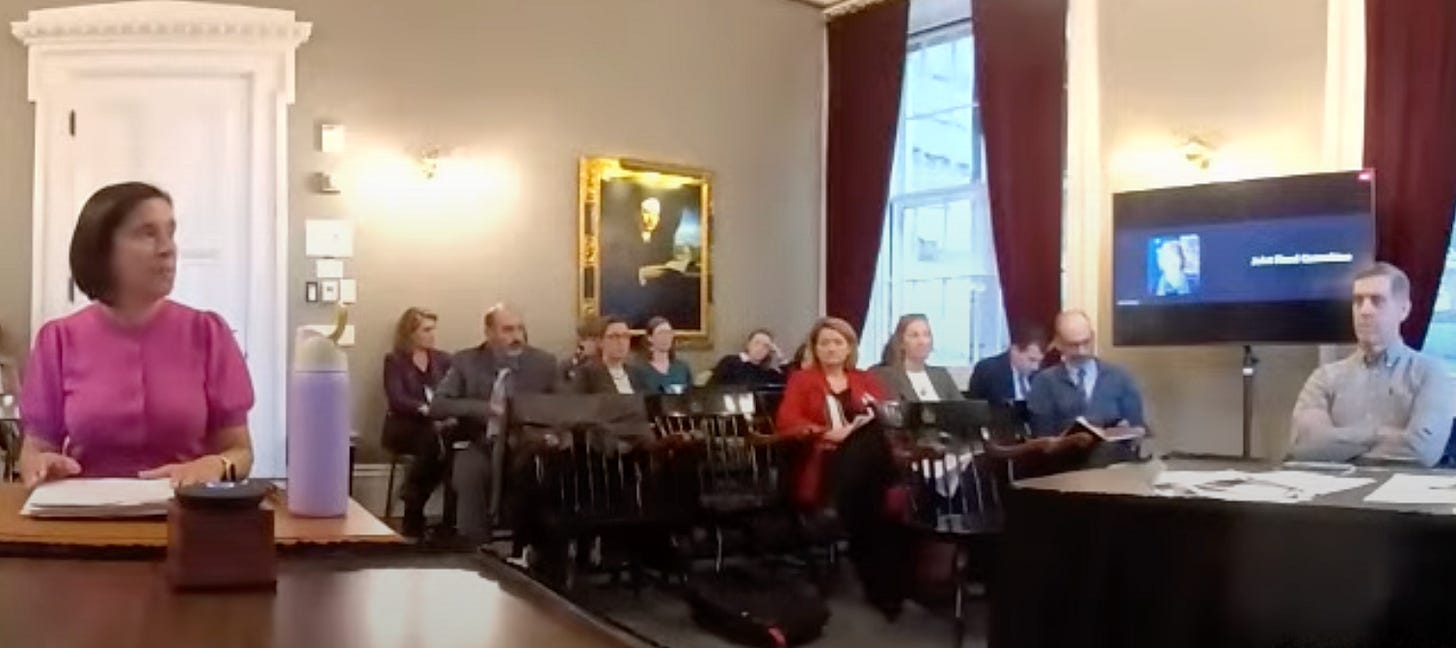The Shutdown’s Real Cost to Vermont
To protect Vermonters from the federal crisis, the state may be forced to sacrifice its own strategic plans for housing and property tax relief.
As the federal government shutdown continues, the immediate anxiety among Vermont’s leaders is palpable. Officials are rightly concerned about fronting tens of millions of dollars for critical federal programs with no guarantee of repayment.
But beyond the immediate cash-flow problem lies a far more painful choice, one that was not the focus of initial reports but is now coming into sharp relief: Vermont may be forced to sacrifice its own strategic plans for housing and property tax relief to pay for Washington’s political crisis.
The situation was laid bare during a public meeting of the Legislature’s Joint Fiscal Committee on October 16.
“I’m trying to get as comfortable as I can with discomfort — because that’s a constant right now,” Secretary of Administration Sarah Clark told the committee, encapsulating the impossible trade-offs the state faces.
The Painful Choice: Vermont’s Priorities vs. Washington’s Crisis
The core of the issue lies in what state funds would actually be used to plug the federal gap. While Treasurer Mike Pieciak has stated the state could face $30 million to $50 million in unreimbursed costs, the money to cover that isn’t sitting in a simple rainy-day fund. A significant portion of it is cash the Legislature had already earmarked for Vermont’s most pressing domestic problems.
According to a review of the state budget, the Fiscal Year 2025 Budget Adjustment Act proactively set aside $133.5 million in the General Fund. This was not for an unforeseen disaster; it was a strategic allocation intended to be used in the next fiscal year to make meaningful investments in permanent housing and provide property tax relief—two of the most persistent and difficult challenges facing Vermonters. This forward-thinking allocation represents a substantial portion of the state’s approximately $329 million in total statutory reserves.
Now, that carefully laid plan is in jeopardy. The choice facing Governor Scott and state lawmakers is becoming brutally clear: do they use the money set aside to build affordable housing and ease the property tax burden to instead pay for federal programs?
Critical Lifelines at Risk
According to the Vermont Joint Fiscal Office, the state is facing critical funding deadlines for programs that thousands of Vermonters rely on for basic survival. The pressure to act is immense.
Heating Assistance (LIHEAP): The Low Income Home Energy Assistance Program is a top concern. With winter approaching, the largest payments that help families and seniors keep their homes warm are scheduled to go out in mid-November. Those payments are now at risk because the program’s annual funding was never approved by Congress.
Food Security (3SquaresVT): While October benefits for the state’s SNAP program were paid, the funding for November is not guaranteed. Historical precedent suggests the USDA can only pay benefits for 30 days into a shutdown, putting the ability of thousands of families, children, and seniors to keep food on the table in serious doubt.
Women, Infants, and Children (WIC): State officials have indicated that this crucial nutrition program for new mothers and young children is funded into “at least early December,” but its long-term stability is not guaranteed, adding another layer of uncertainty for vulnerable families.
Why This Shutdown Breaks All The Rules
For decades, states have operated under the assumption that if they stepped in to fund federal programs during a shutdown, they would eventually be made whole. This shutdown is different. The fear of non-repayment is more credible than ever before, for two key reasons:
A Pattern of Targeting: The administration has openly and explicitly targeted “blue states” like Vermont for funding cuts, including rescinding billions in previously approved grants. This transforms the risk from theoretical to a documented political strategy.
Breaking Precedent: The administration has demonstrated a willingness to break long-standing norms, most notably by threatening to withhold legally guaranteed back pay from its own federal workers.
This behavior has shattered the trust that underpins the federal-state partnership. As Representative Charlie Kimbell, D-Woodstock, told the committee, Vermont is now dealing with an “unreliable — but very important — partner.”
What This Means for Vermonters
The shutdown is no longer just a story about a political stalemate in Washington. For Vermont, it has become a direct threat to the state’s ability to solve its own problems.
State leaders must step in to prevent a humanitarian crisis, but doing so means diverting funds from the very initiatives designed to make the state more affordable and stable in the long term. Every dollar spent to cover for Washington’s failure is a dollar not spent on a planned, strategic priority for the people of Vermont, forcing a choice between funding today’s survival and investing in tomorrow’s stability.



